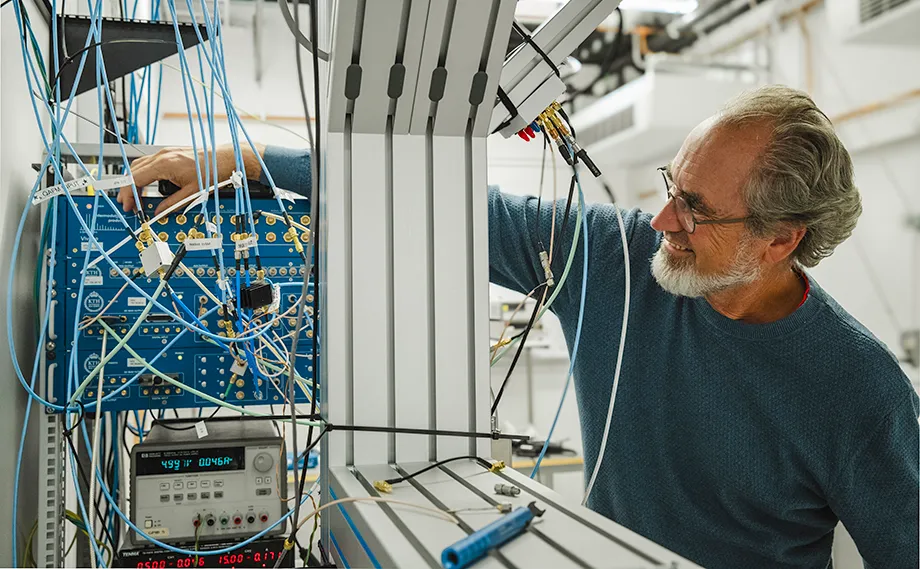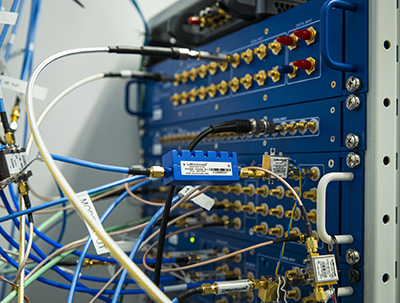The quantum computer – a super machine with challenges

Quantum technology in focus
The super machine of the future, the quantum computer, is taking the step from theory to reality. At KTH, research is being conducted on everything from how the hardware itself should be built to what problems a quantum computer can actually solve.
Quantum computers are believed to be able to solve problems that even the most powerful supercomputers cannot calculate. By utilising the laws of quantum physics, the possibility of breakthroughs in many areas of research is opening, from medical development and materials research to cyber security.
“Quantum technology may affect all parts of society that are dependent on information. Directly or indirectly, the technology can affect virtually everything," says David Haviland, professor of nanostructure physics at KTH.
Among other things, quantum technology can enable faster development of new pharmaceuticals and materials, provide more accurate forecasts in climate research, and further accelerate AI development. At the same time, quantum-security encryption can provide stronger protection for our most sensitive systems.
Create "superqubit"
The road to the quantum computer is fraught with challenges. The biggest challenge has to do with the fragility of the quantum state. Unlike ordinary computers, where information is stored as ones and zeros, quantum computers use quantum bits (qubits). Their unique properties – being able to exist in many states at the same time – can easily be destroyed by the slightest disturbance from the environment.
“Right now, the research community seems to agree that we need to implement something called quantum error correction in order to create a usable quantum computer,” says David Haviland.
Some progress has been made by creating a kind of ‘superqubit’ where several qubits work together to compensate for environmental disturbance, which is seen as proof that quantum error correction works in practice.

Develop algorithms
But regardless of the technical challenges, we also need to get a better grip on what quantum computers can and should be used for in practice, points out David Haviland.
“KTH has strong research environments in mathematics and computer science that contribute to this particular piece of the puzzle: understanding what types of problems quantum computers can solve best and developing the algorithms that enable quantum computers to do their job.”
David Haviland's research group focuses on an alternative type of quantum computation. While many are trying to build quantum computers that work with optical photons, Haviland is using microwave photons to create a well-controlled structure of quantum entanglement – a special effect in quantum physics where photons at different frequencies are correlated in a way that is not possible in classical physics.
Several breakthroughs needed

The hope within the project is that it will ultimately be easier to scale up to enough entangled photons to create truly useful quantum computers. The number of entangled photons or qubits is crucial because each additional entangled thing doubles the computing capacity.
“Entangling photons has its own challenges, but I believe that a new approach to quantum computer research is particularly important, and that is what we are working on,” he says.
When do you think a functioning quantum computer will see the light of day?
“I think we still have a long way to go. At the same time, a breakthrough could happen, and things could move very quickly. But it will take several such breakthroughs before we see a fully usable quantum computer”.
Text: Christer Gummeson ( gummeson@kth.se )

